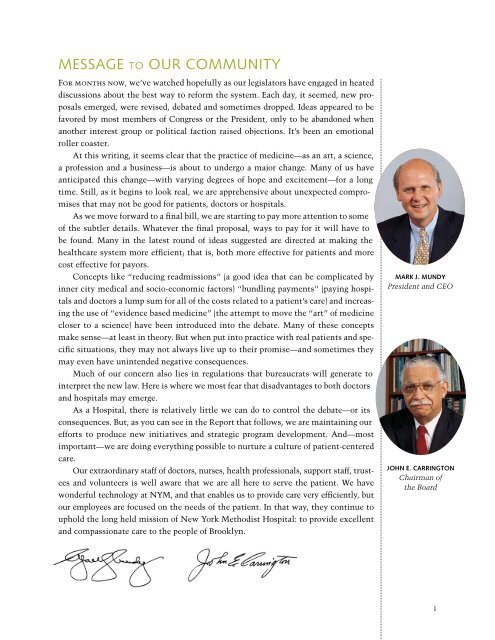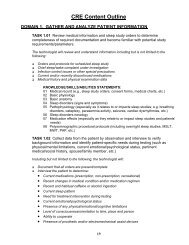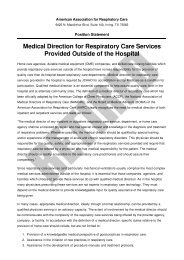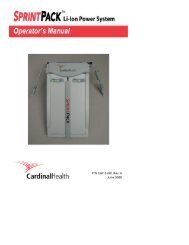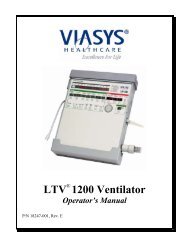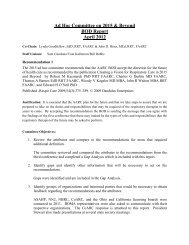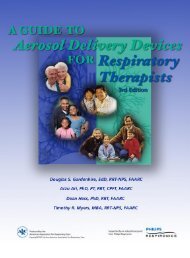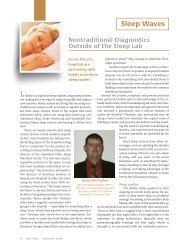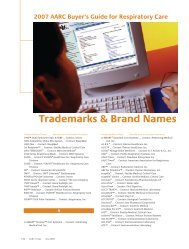MESSAGE to OUR COMMUNITYFor months now, we’ve watched hopefully as our legislators have engaged in heateddiscussions about the best way to reform the system. Each day, it seemed, new proposalsemerged, were revised, debated and sometimes dropped. Ideas appeared to befavored by most members of Congress or the President, only to be abandoned whenanother interest group or political faction raised objections. It’s been an emotionalroller coaster.At <strong>this</strong> writing, it seems clear that the practice of medicine—as an art, a science,a profession and a business—is about to undergo a major change. Many of us haveanticipated <strong>this</strong> change—with varying degrees of hope and excitement—for a longtime. Still, as it begins to look real, we are apprehensive about unexpected compromisesthat may not be good for patients, doctors or hospitals.As we move forward to a final bill, we are starting to pay more attention to someof the subtler details. Whatever the final proposal, ways to pay for it will have tobe found. Many in the latest round of ideas suggested are directed at making thehealthcare system more efficient; that is, both more effective for patients and morecost effective for payors.Concepts like “reducing readmissions” (a good idea that can be complicated byinner city medical and socio-economic factors) “bundling payments” (paying hospitalsand doctors a lump sum for all of the costs related to a patient’s care) and increasingthe use of “evidence based medicine” (the attempt to move the “art” of medicinecloser to a science) have been introduced into the debate. Many of these conceptsmake sense—at least in theory. But when put into practice with real patients and specificsituations, they may not always live up to their promise—and sometimes theymay even have unintended negative consequences.Much of our concern also lies in regulations that bureaucrats will generate tointerpret the new law. Here is where we most fear that disadvantages to both doctorsand hospitals may emerge.As a Hospital, there is relatively little we can do to control the debate—or itsconsequences. But, as you can see in the Report that follows, we are maintaining ourefforts to produce new initiatives and strategic program development. And—mostimportant—we are doing everything possible to nurture a culture of patient-centeredcare.Our extraordinary staff of doctors, nurses, health professionals, support staff, trusteesand volunteers is well aware that we are all here to serve the patient. We havewonderful technology at NYM, and that enables us to provide care very efficiently, butour employees are focused on the needs of the patient. In that way, they continue touphold the long held mission of New York Methodist Hospital: to provide excellentand compassionate care to the people of Brooklyn.Mark J. MundyPresident and CEOJohn E. CarringtonChairman ofthe Board
innovation at new york methodist hospitalLast year was an exciting one for New York MethodistHospital. Not only did we cut the ribbon on new facilitiesand programs, we also announced a number of innovativemedical procedures. NYM has been recognized for our workboth inside and outside of the hospital. We look forward toanother exciting year and to keeping New York MethodistHospital on the cutting edge of health care.nym has beenrecognizedfor our workboth insideand outsideof the hospital.New Centers and ProgramsThe newly constructed Park Slope Infusion Center,located at 342 Fourth Avenue, began accepting patientsin October of 2008. In addition to offering treatment formost types of cancer, the center offers infusion therapyfor blood disorders, rheumatoid arthritis, Crohn’s disease,multiple sclerosis and osteoporosis. The facility includes29 private treatment stations, an on-site pharmacy, twolaboratories, two nursing stations, physician offices andan examination room.The Hospital’s newly renovated physician offices at OneProspect Park West made their debut. The construction ofthe new site allowed NYM to expand services in urology,pediatrics, podiatry and orthopedics, and wound care.The Brooklyn Spine and Arthritis Center opened a satelliteoffice at the One Prospect Park facility in order to betterserve the growing number of individuals in Brooklynseeking orthopedic services. The Center also welcomedseveral new orthopedic surgeons. “The expansion ofthe Spine Center has allowed us to include experts inorthopedic subspecialties such as osteoporosis and hiparthroscopies,” said Henry Tischler, M.D., chief of theDivision of Orthopedics. Located across the street fromGrand Army Plaza, one of Brooklyn’s most famouslandmarks, the offices at One Prospect Park West areeasily accessible, spacious and comfortable.In the fall of 2009, NYM’s Center for Allied HealthEducation opened the School of Diagnostic MedicalSonography. The program requires two years ofcoursework, with learning concentrations in generalsonography and cardiac sonography. The School ofDiagnostic Medical Sonography represents the latestaddition to New York Methodist Hospital’s allied healtheducation offerings, which include the Bartone Schoolof Radiography, the NYM School of Radiation TherapyTechnology, the NYM School of Medical Technologyand the NYM EMS Institute/Paramedic Program.New ProceduresThe New York Methodist-Cornell Heart Center nowoffers a number of new procedures, many of which areminimally invasive. Once such minimally invasiveprocedure is used to treat thoracic aortic aneurysms.During the surgery, an incision is made that allows thesurgeon to pass a stent graft into the thoracic aorta.Following the procedure, blood travels through the stentand bypasses the aneurysm, creating a new pathway forblood flow. “The procedure requires a team approachbecause two areas of specialization are required for theplacement of the thoracic stent graft” said Leonard Y.Lee, M.D., program director of cardiac surgery at NYM,who performs the procedure with Marcus D’Ayala, M.D.,NYM’s chief of vascular surgery. A minimally invasivealternative to traditional mitral valve surgery is now alsoavailable for qualified patients. Traditional procedures,which involve dividing the breastbone in order to reachthe heart, are replaced by an alternative procedurewhere only a four-inch incision is required to repairthe faulty valve.


